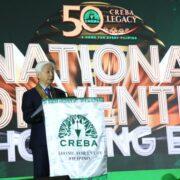To boost the real estate sector during the ongoing pandemic, the real estate loan limit for universal and commercial banks (U/KBs) have been increased from 20% to 25% by Philippine monetary officials.
“The increase translates to additional liquidity for real estate lending amounting to around PHP1.2 trillion based on end-March 2020 numbers,” Bangko Sentral ng Pilipinas (BSP) Governor Benjamin Diokno told journalists in a Viber message last Thursday, August 20.
U/KBS and their subsidiary TBs are required to conform to the real estate stress test (REST) limit after assuming a 25% exposure to real estate.
Specifically, U/KBs and their subsidiary TBs are required to heed the 10% capital adequacy ratio (CAR) and 6% common equity tier (CET) 1 capital ratio while stand-alone TBs are required to meet the 10% CAR and 6% Tier 1 ratio.
The new guidelines set forth by the BSP on computing the REST limits exclude residential real estate loans to individuals for their own company and foreclosed real estate property, which aims to allow banks to have exposure to the real estate sector “for as long as it is able to demonstrate ability to manage risks.”
“The forthcoming guidelines reinforce this approach by relating assessment of risks by a covered bank on its real estate exposure to its Internal Capital Adequacy Assessment Process or capital planning process. This ensures that a holistic approach is adopted by banks in the management of their risks vis-à-vis their capital position,” the BSP said.
During a virtual briefing made through the central bank’s Facebook page last August 20, BSP Deputy Governor Francisco Dakila Jr. said the slowdown in bank lending is expected because of the impact of the pandemic.
“This one (the easing of loan limits for real estate loans) is going to help support bank lending to the real estate sector,” he said. Further adding that bank lending continues to grow year-on-year, although at a slower pace because of weaker demand.






